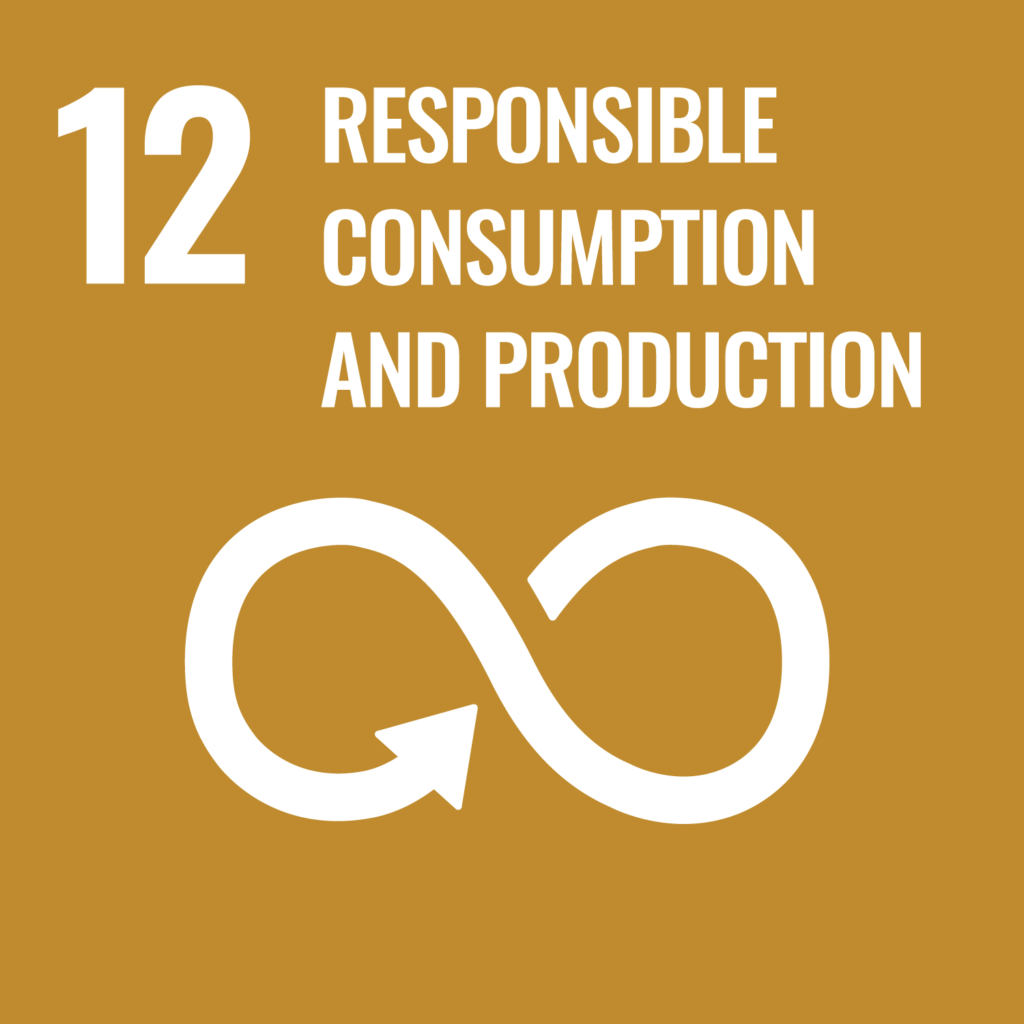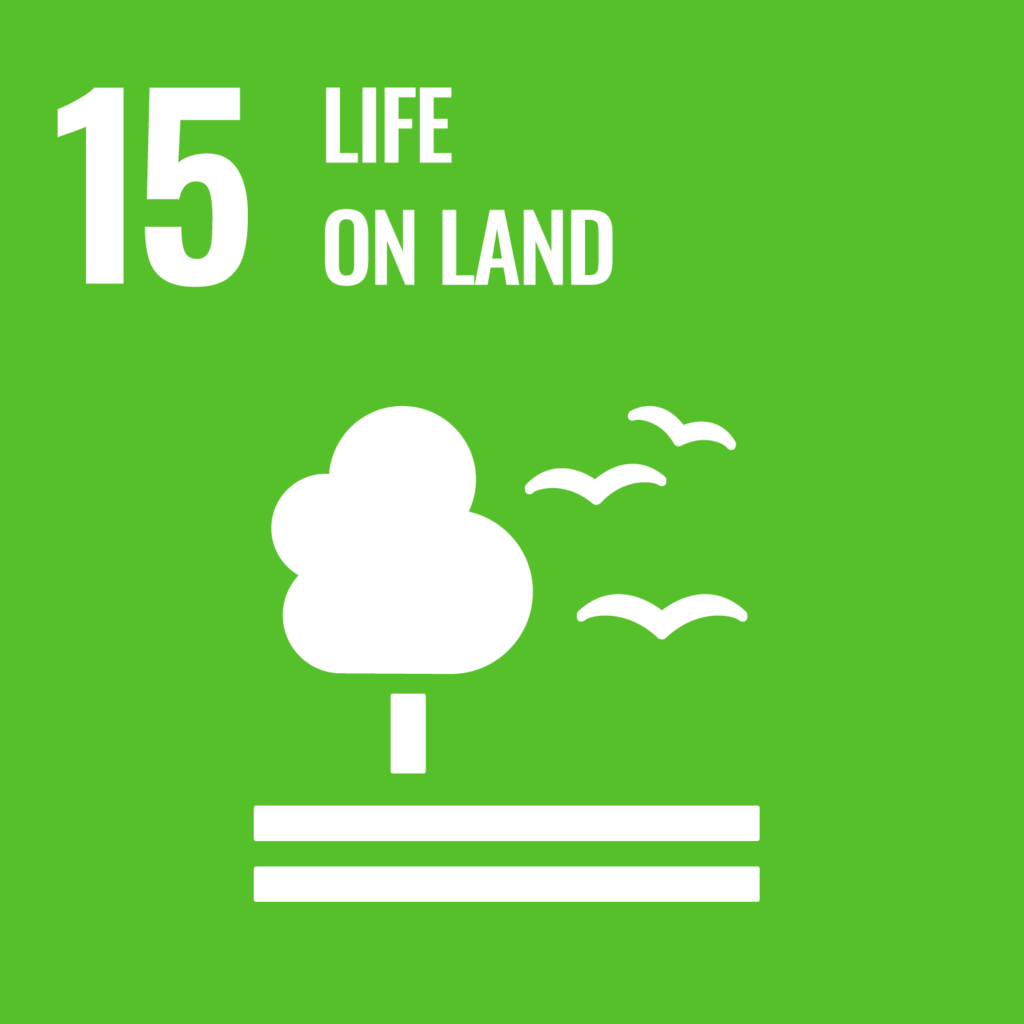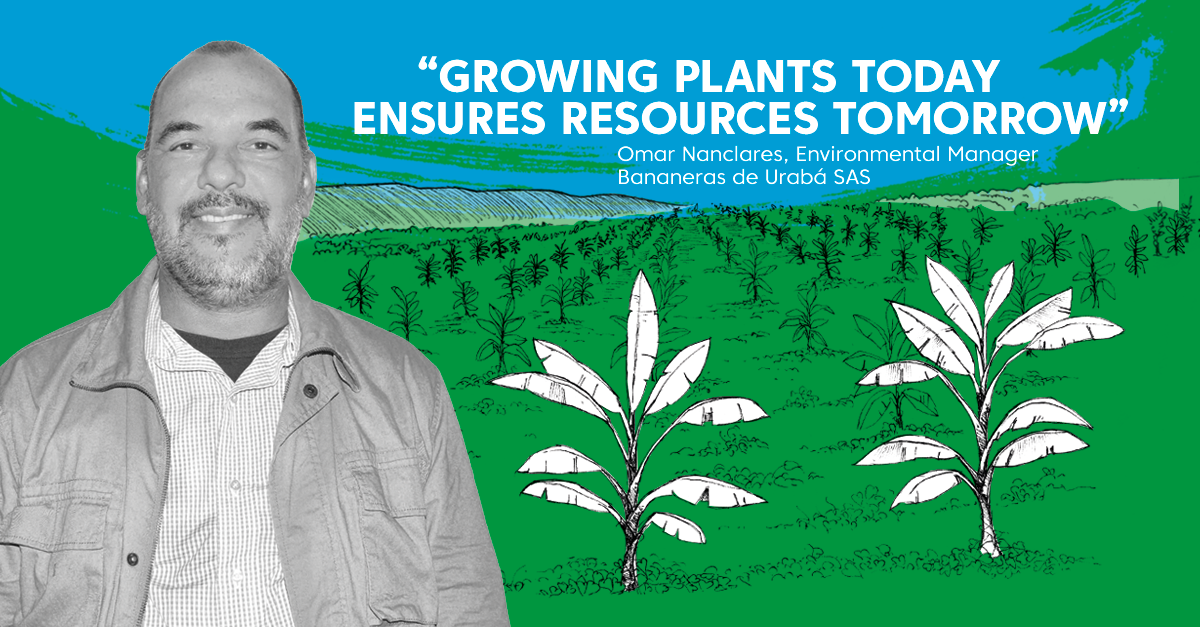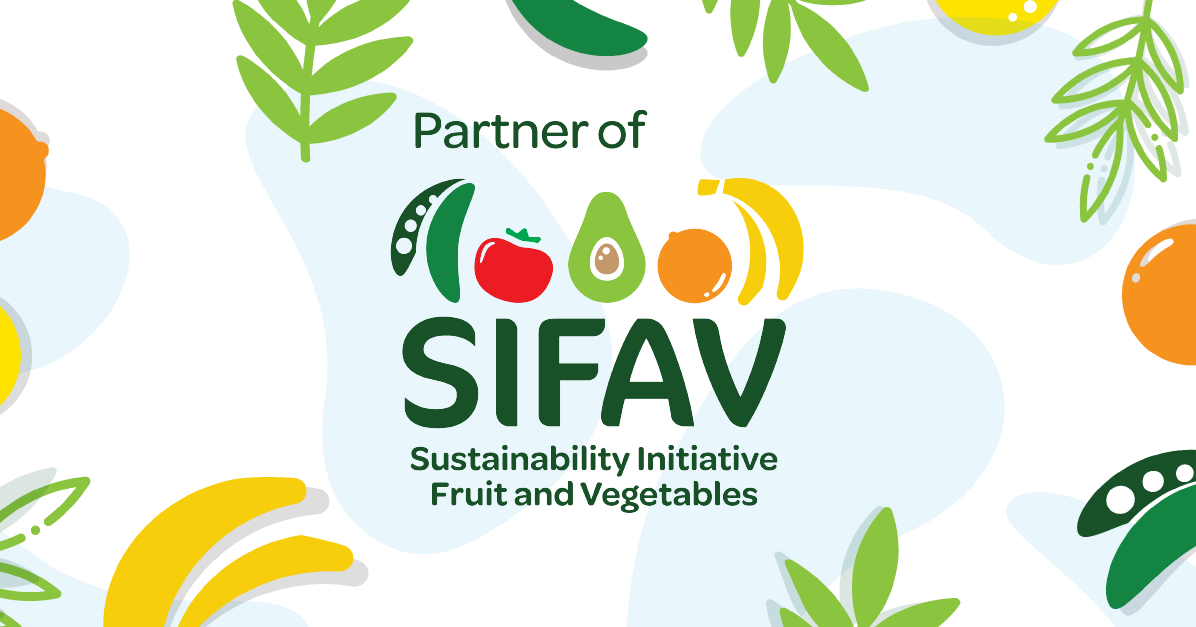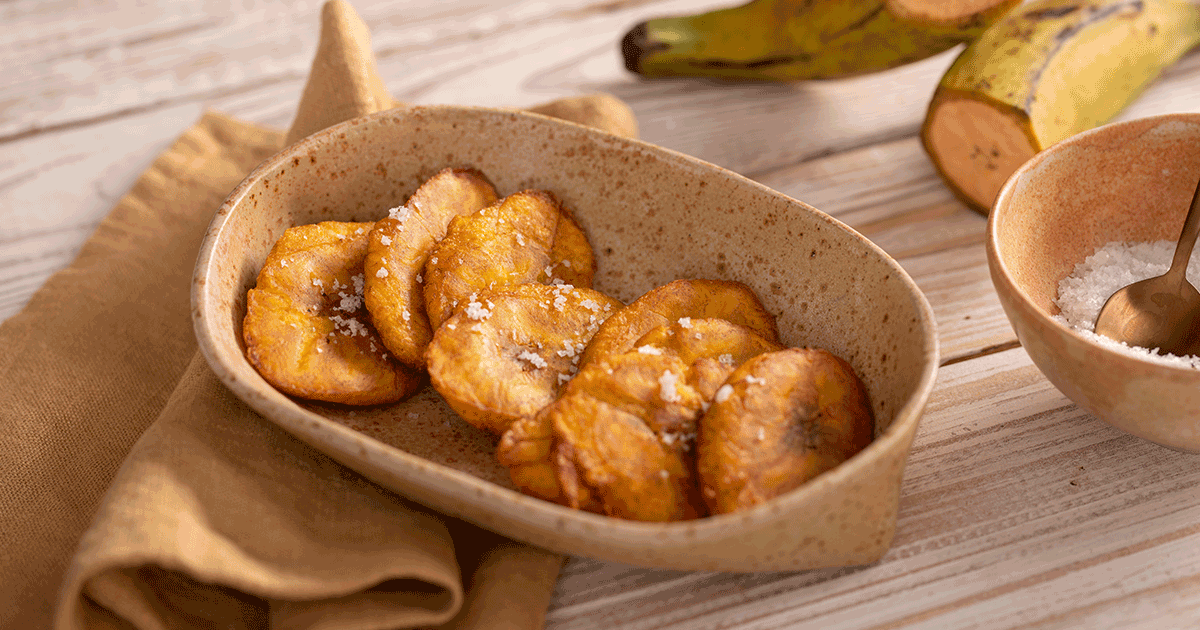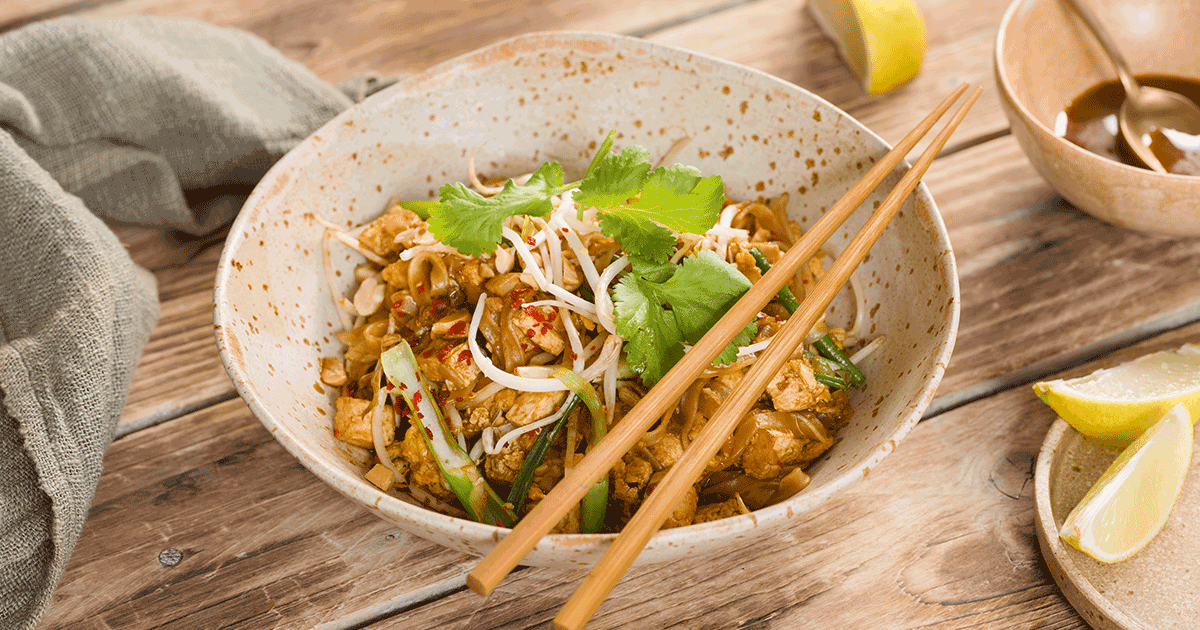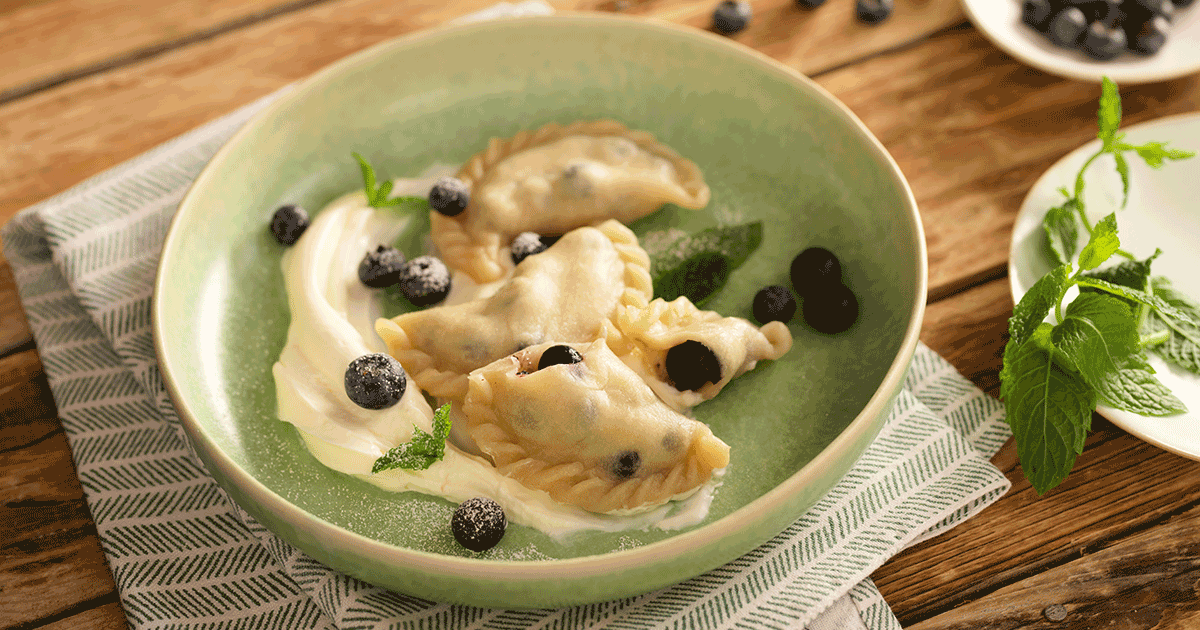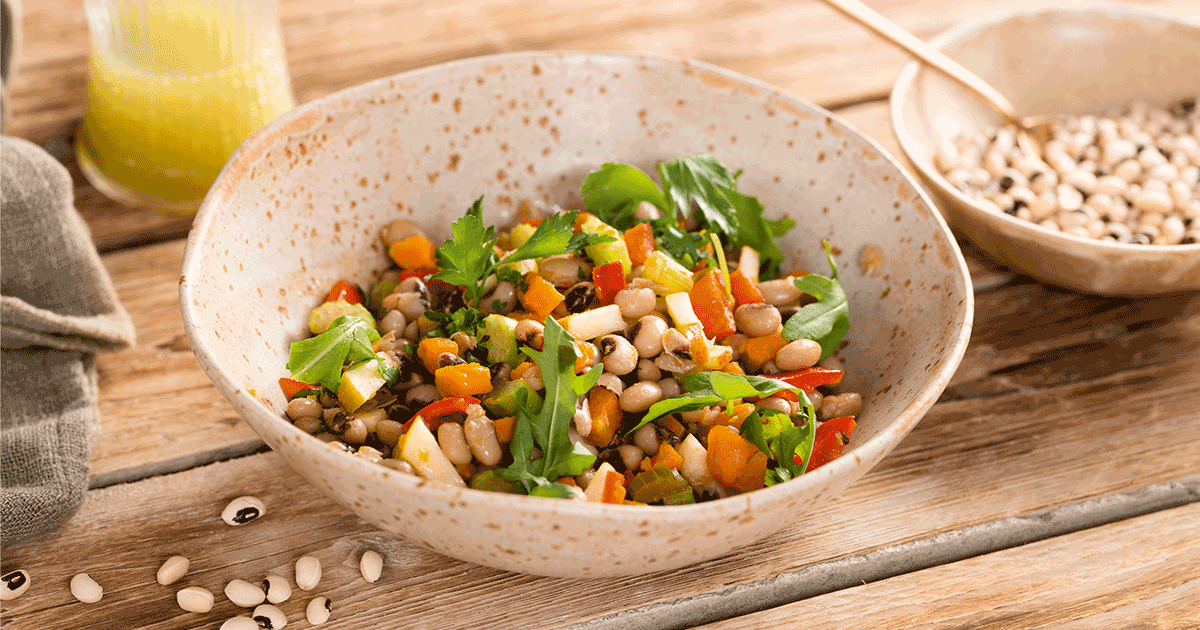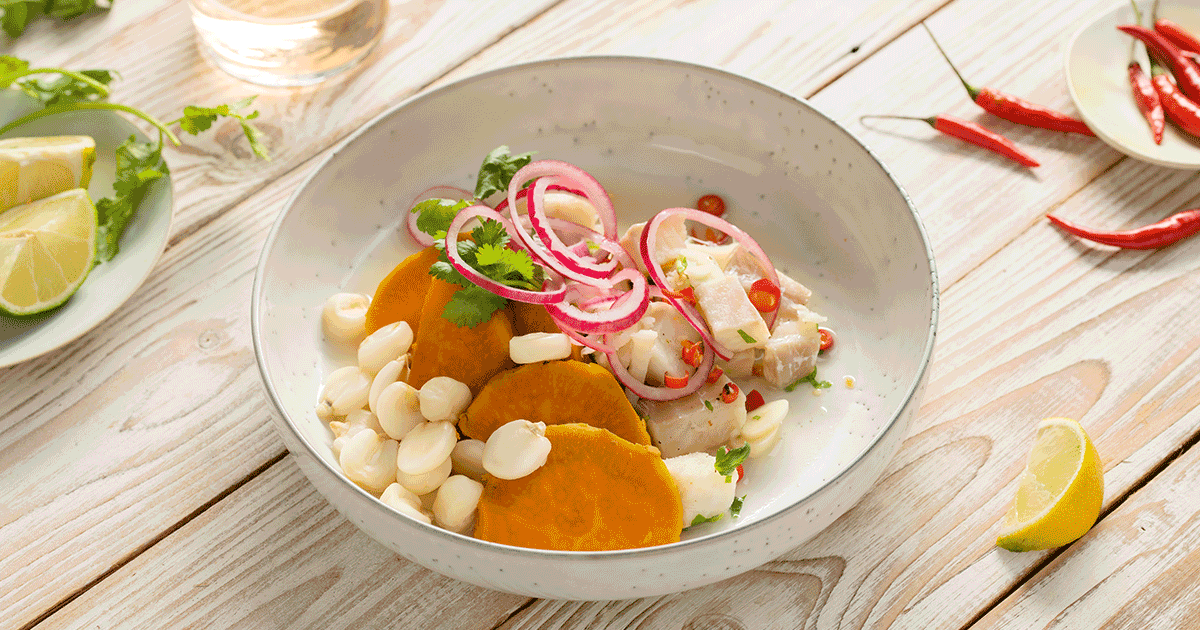But the cooperative cares deeply about ecological projects, too. Therefore, it comes as no surprise that we were able to inspire Bananeras de Urabá to join our BE CLIMATE mission.
With the goal of preserving tomorrow’s natural resources, Bananeras de Urabá did an intensive research on possible methods of revegetating the surface of their plantations and finally decided to plant various types of trees, shrubs, and leguminous plants.

The advantage: Trees do not only bind CO₂ from the atmosphere, they also form a natural protection against erosion and a living barrier against the diffusion of pesticides. In addition, the shrubs help to maintain the natural course of rivers and irrigation systems. The leguminous plants in turn protect the soil against loss of humidity and serve as nitrogen suppliers for the banana plants.
You would like to know how this works?
Leguminous plants have the special ability to use the nitrogen in the air for their metabolism. With their roots, or, to be more exact, with so-called root tubercles, they form a symbiosis with (nitrogen-fixing) bacteria and thus enrich the soil with nitrogen, which is vital for the plant. In fact, nitrogen is a vital nutrient for all creatures. The use of mineral and organic nitrogen fertilisers to increase the yield is therefore common practice in agriculture. Very important, however, is their careful and demand-oriented application. An excess of nitrogen can pollute terrestrial and aquatic ecosystems and have a negative impact on climate, air quality and biodiversity.
By planting leguminous plants, Bananeras de Urabá reduced to a minimum fertilisation in general and the quantity of nitrogen fertiliser in particular. This measure helped them to save CO₂ and nitrogen emissions, to preserve the grounds as well as bodies of water, and to decrease their impact on climate change. Bananeras de Urabá is a great example of how to make our world a little bit greener and by doing so, preserve natural resources for future generations.
Bananeras de Urabá’s efforts support the following SDGs:
